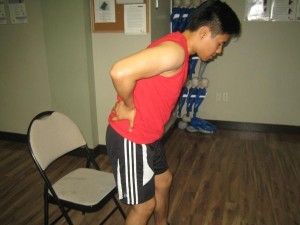A hip dislocation is basically a type of injury that occurs once the head of the femur ends up displaced from the hip joint. Always bear in mind that this type of dislocation is usually instigated by severe trauma due to vehicular accidents, falls or sports injuries. The symptoms of a hip dislocation are strikingly similar to the symptoms of a hip fracture and require immediate medical care in order to prevent complications from developing.
You can enroll in a first aid course today so that you will learn how to distinguish the symptoms of a dislocation from a fracture. By being familiar with the symptoms, you can provide the appropriate first aid care as well as seek medical care when needed.
Pain
The usual symptom of hip dislocation is abrupt, severe pain. Once the femoral head is disconnected from the hip socket, the tendons and muscles surrounding the joint can also become damaged or torn. As a consequence, the individual who sustained this type of injury can suffer from extended sensation of piercing, aching pain that tends to worsen once the joint is moved. Take note that these symptoms can last for some time until the damaged tissue is given enough time to rest and completely heal. The individual might not be able to fully engage in activities at home or at work especially if the pain is severe.

Immobility of the hip
If an individual sustained a hip dislocation, he/she can experience problems moving the affected hip as a symptom. The symptoms of pain and swelling can disrupt with the normal movement of the hip, making walking or standing using the affected limb a difficult task. The movement of the injured area is not recommended since this can result to further damage to the muscles, nerves and ligaments.
Swelling
Damage on the joint due to a hip dislocation can cause the accumulation of fluid at the site of injury. Once this occurs, the individual who experiences this type of injury can develop swelling of the hip joint. Take note that the skin covering the hip joint can appear discolored or puffy and usually tender to the touch. In case the blood vessels under the skin are damaged during the hip dislocation, the individual can also develop bruising on the affected body part. The swelling steadily diminishes as the hip dislocation starts to heal.
Deformity of the hip or leg
It is important to note that the hip joint can appear visually deformed as an indication of a hip dislocation. The affected hip area can protrude abnormally or can appear deformed. The individual with hip dislocation will also notice that his/her legs have varying lengths as a result of the injury. These symptoms of hip dislocation are temporary and tend to resolve once the injury has fully healed.
